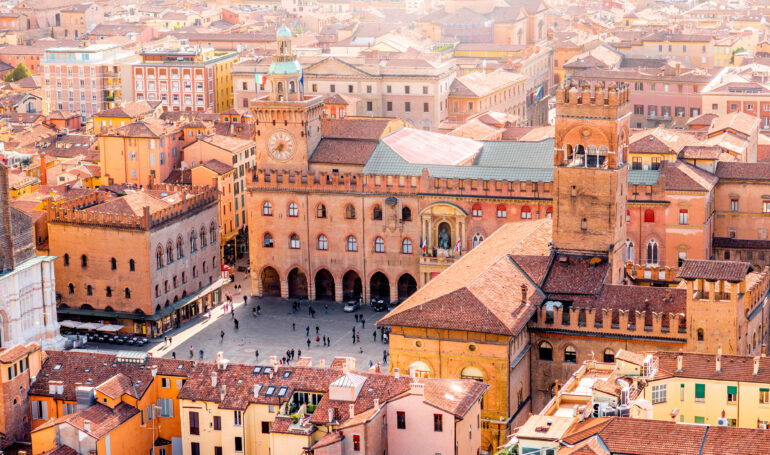
A Visitor’s Guide to Bologna
Bologna the learned, Bologna the fat, Bologna the red!
Perhaps you have heard of the city. Perhaps you’ve asked yourself: Is Bologna worth visiting? The capital of Emilia Romagna, Bologna has many faces to show off. Learned because within its walls was born the oldest university in the western world, fat because, everyone knows, in Bologna you will eat well, red for the color that the roofs and houses give to the city since medieval times, but also because it was ruled for half a century by communist mayors.
When I started my business, I knew right away that Bologna and its neighbors would be on my list of offerings. Some folks thought I was crazy. “Your clients will want to go to Tuscany, Amalfi, Sicily,” they said, “they don’t want to go to Bologna!” Those places are wonderful, and I do offer tours there, but Bologna is Italy’s food capital! My business focuses on Italian food! How could I not offer a tour here? I covered Bologna’s food scene on a previous post, click here to read it. But now I wanted to write a follow up post on what else Bologna has to offer, beside the tortellini, Parmigiano and mortadella.
The heart of the city is Piazza Maggiore, overlooked by the Basilica of San Petronio, dedicated to the patron saint of Bologna. Next to the square, the elegant Neptune Fountain stands, designed by Giambologna, and photographed by all visitors. And then, the gentle, green hills, which can be reached in a few minutes by car or bus. The Sanctuary of San Luca stands out on one of these hills. You can reach it by walking about 2 miles under the arches of the portico of the same name, the longest in the world.
Besides its culinary offerings, which are plentiful, here’s a short list of what else the city has to offer.
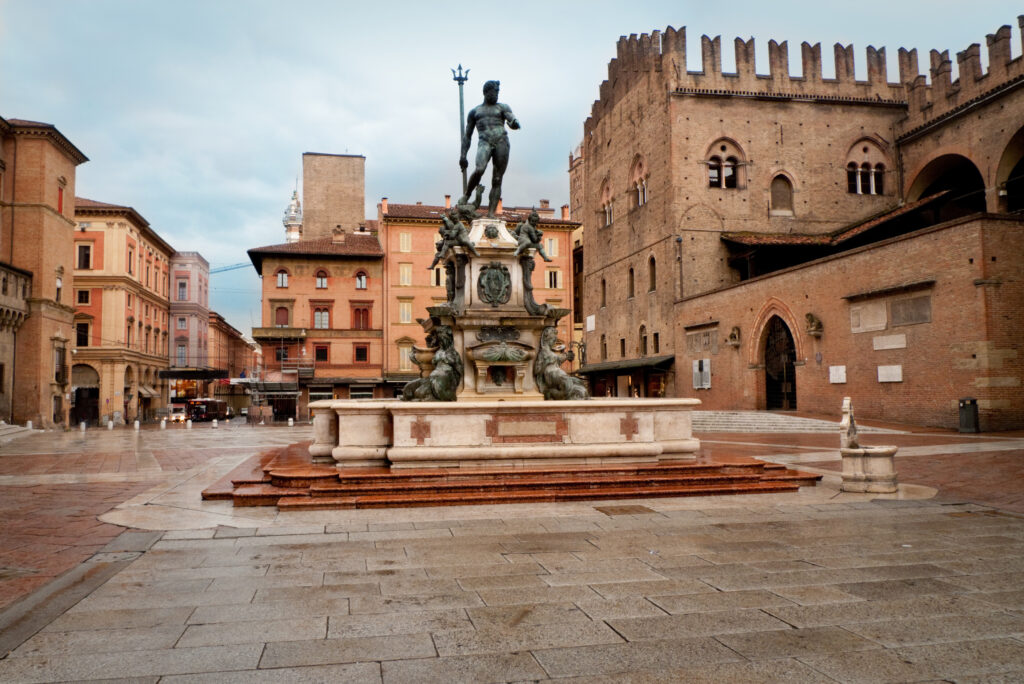
Piazza Maggiore
The physical and symbolic center of Bologna, it is the site of the most important civil, religious and political events in the city. Built between 1200 and 1203 following the consolidation of the municipal institutions, it reached its current layout in the mid-fifteenth century. On the north side is the Palazzo del Podestà (13th century), with its Renaissance facade, and next to it the Fountain of Neptune (1563-66).
On the east side of the square, overlooks Palazzo d’Accursio, which incorporates three different buildings, erected between the 13th and 16th centuries. Finally, on the western front is the Palazzo dei Banchi, so called because of the money changers’ shops once located under its portico. The central part of the square, on the other hand, is characterized by a pedestrian platform, called “il crescentone,” built in 1934 in white and pink granite, whose nickname derives from the crescent, a typical Bolognese salted focaccia bread.
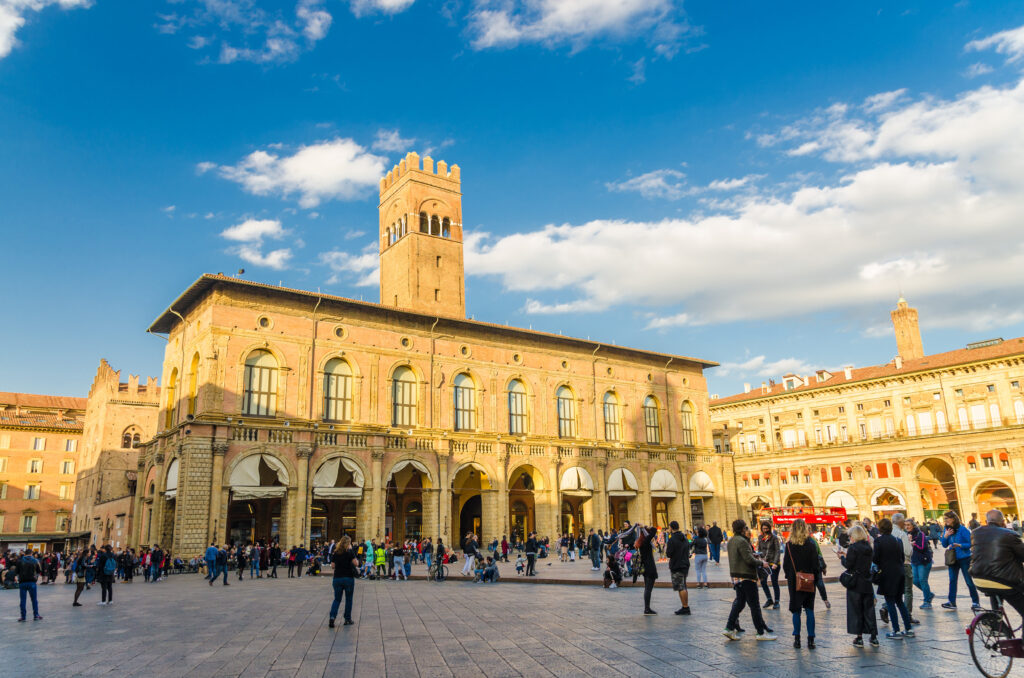
King Enzo Palace
Behind the Palazzo del Podestà stands Palazzo Re Enzo, built between 1244 and 1246 to expand the municipal buildings. It owes its name to King Enzo of Sardinia, son of Philip II of Swabia, who lived as a prisoner within these walls between 1249 and 1272. Renovated for the first time in the second half of the eighteenth century, the building underwent new and impressive restorations, carried out by Alfonso Rubbiani, which restored its Gothic style, thanks to the reconstruction of the battlements, the arches on the ground floor, and the fifteenth-century staircase. Today the building hosts conventions, cultural initiatives, company meetings, shows and exhibitions. It also holds the annual Festival del Tortellino, which takes place every year during the first Saturday in October. I was able to attend in 2018, and let’s just say if you happen to be in Bologna during this festival, it’s a must!
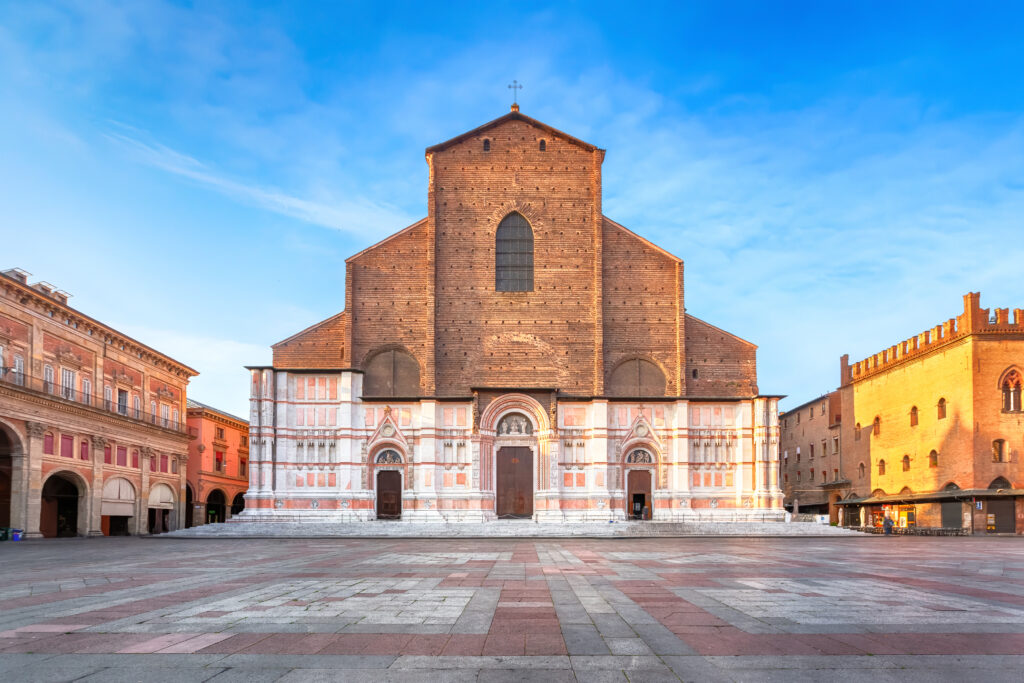
Basilica of San Petronio
The favorite church of the Bolognese Catholics, and fifth in the world in size, it overlooks Piazza Maggiore and is dedicated to the patron saint who, according to legend, would have drawn the perimeter with four crosses, now kept inside the Basilica.
In the grandiose interior, in addition to the central nave, there are six bays which correspond to the same number of lateral bays. The inside is rich in works of art. It also holds the largest sundial in the world: the Cassini sundial, finished in December 1657, 66.8 meters long. Entrance is free, but if you want to snap a few pictures, be prepared to pay a small entrance fee.
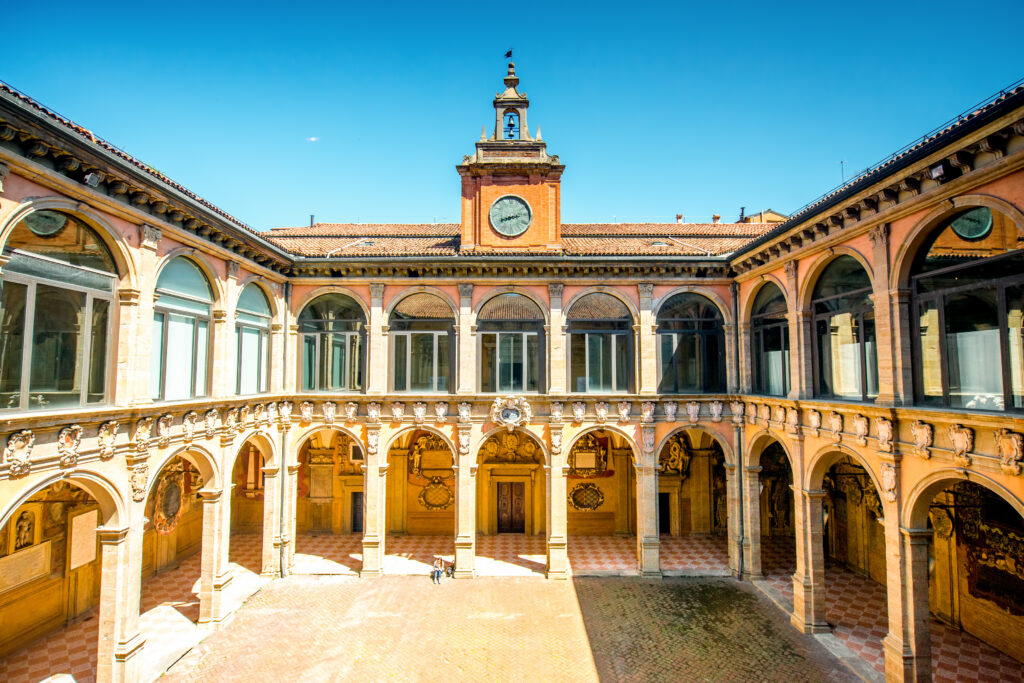
Archiginnasio
Just 12 meters from the Basilica of San Petronio, in 1563 Pope Pius IV had the Archiginnasio built by Antonio Morandi. The aim was to satisfy the need to bring together several schools in the same building. It was here that the University of Bologna was born. Worth noting are the Sala dei Legisti, and the reading room of the Municipal Library, one of the largest in Europe. Do not miss the Anatomical Theater.
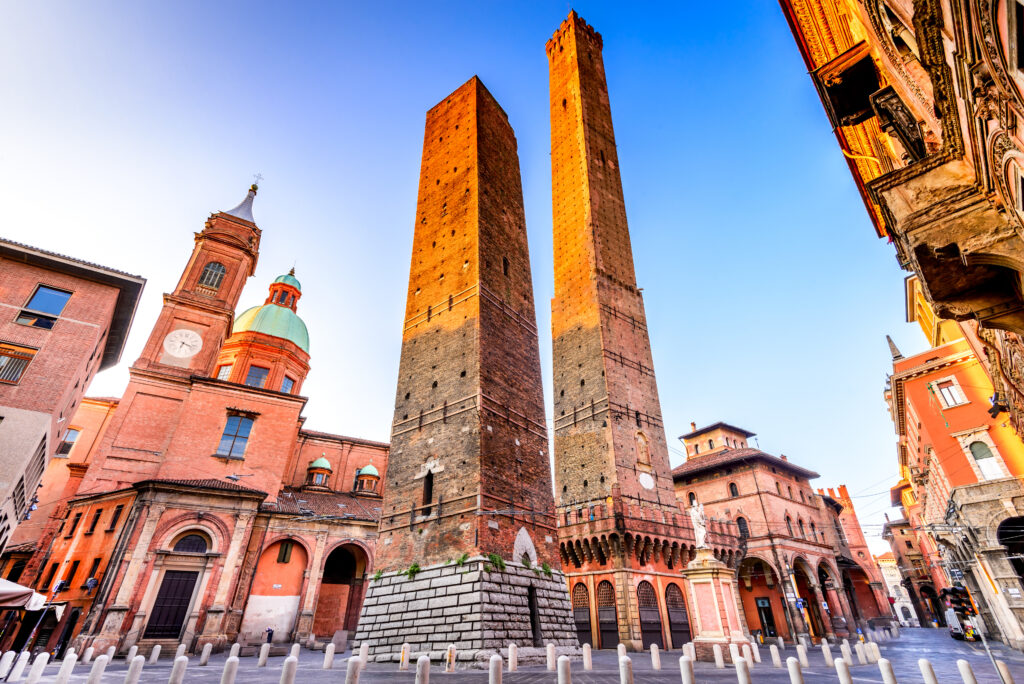
The Two Towers
In the turreted landscape of medieval Bologna, there are only two remaining towers. The Torre degli Asinelli (1109-19), built by the Ghibelline nobleman Gherardo Asinelli, is 97.20 meters high with an inclination of 9 meters, and has faced earthquakes and fires over the centuries. A staircase of 498 steps allows you to reach the top and enjoy a 360-degree view of the city. Built in the same period by other nobles of the Ghibelline faith, Filippo and Oddo Garisendi, the adjacent Torre della Garisenda is mentioned by Dante in the Divine Comedy in canto of the Inferno.
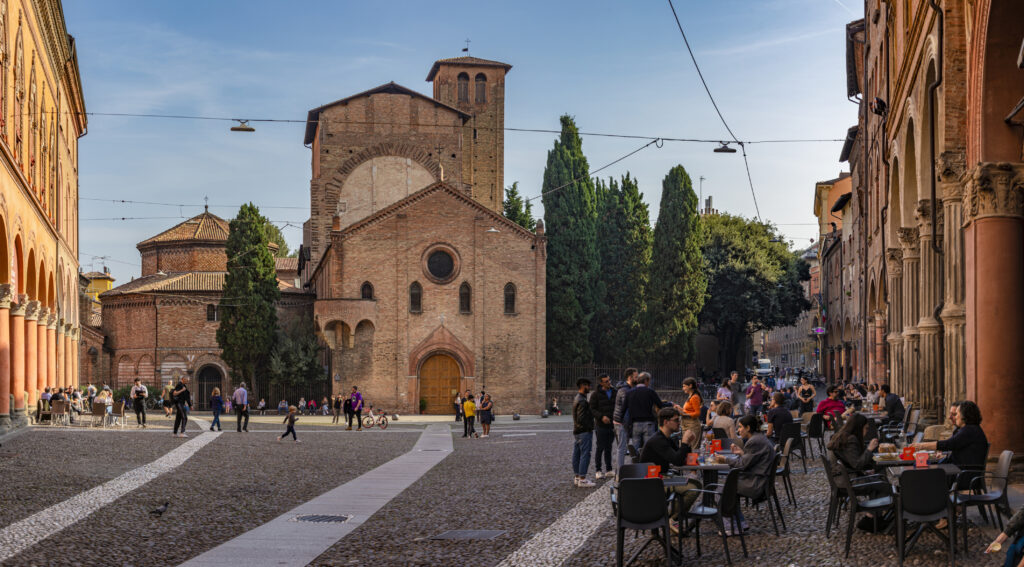
Complex of Santo Stefano or “the seven churches”
This is a complex of religious buildings known as the “Seven Churches.” The tour of the complex begins from the Church of the Crucifix of Lombard, it houses a crucifix from the 1300s, the work of Simone dei Crocifissi. But the most beautiful is the Basilica of the Holy Sepulchre, which is also the oldest. Built on a temple of the goddess Isis, it preserves ancient Roman columns and a source of water, necessary for the worship of the Egyptian deity. Leaving the Church of the Sepulcher you cross the Cortile di Pilato which symbolizes the place where Jesus was condemned: a perfect example of romantic Bolognese construction, in the center of which is the Catino Di Pilato. Next to it is the Benedictine cloister, considered one of the Romanesque masterpieces of Emilia (12th-13th century), while, with the church dedicated to Saints Vitale and Agricola, which houses the remains of the first two martyrs and saints of Bologna, the complex overlooks the large square of the same name, closing off the two rows of porticoes of via Santo Stefano.
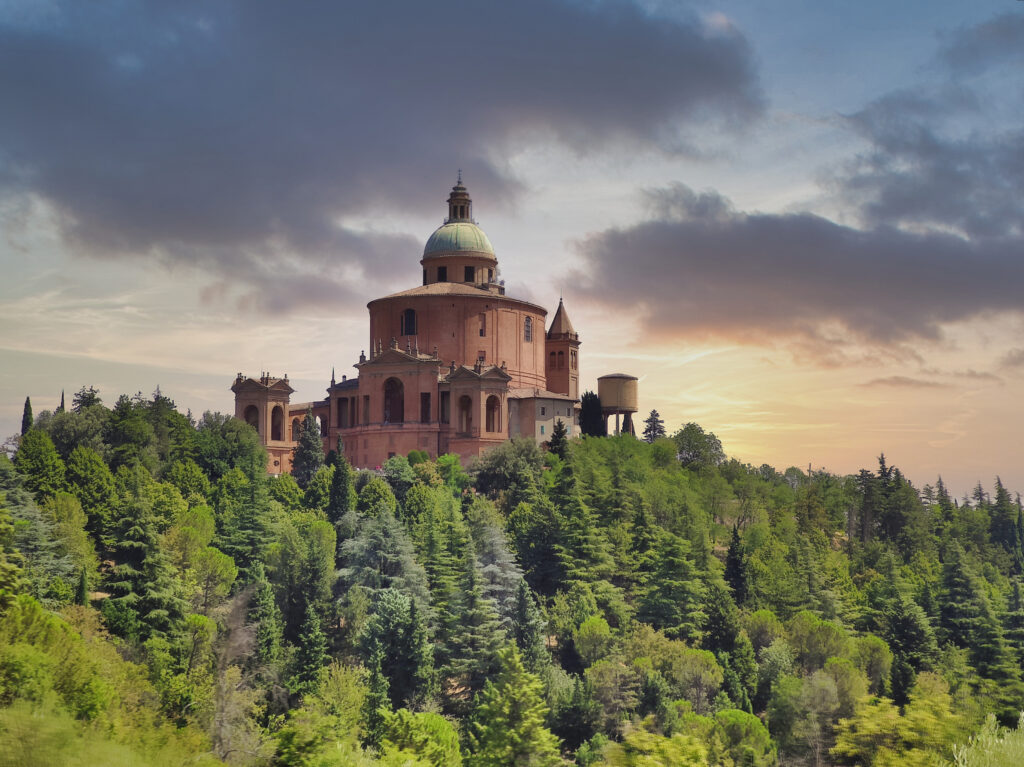
Sanctuary of the Madonna of San Luca
Located on Colle della Guardia, this is a sanctuary of excellence for the city and can be reached by walking along the longest portico in the world, the work of Francesco Dotti is about 2 miles long. Since 1433, the portico has been crossed every year by the procession from the Sanctuary to San Petronio, of the Byzantine icon of the Madonna and Child, kept in the high altar and attributed to the Evangelist Luca. The church, built in Baroque style, has an interior characterized by an elliptical plan on which a Greek cross is grafted.
Complex of Santa Maria della Vita
In the heart of the Quadrilatero, the beating heart of the historic center of Bologna, stands the monumental complex of Santa Maria della Vita. Founded by the Confraternity of the Battuti di Santa Maria in the second half of the 13th century, the church was rebuilt in Baroque style by Giovanni Battista Bergonzoni in 1687, after the disastrous collapse of the ceiling.
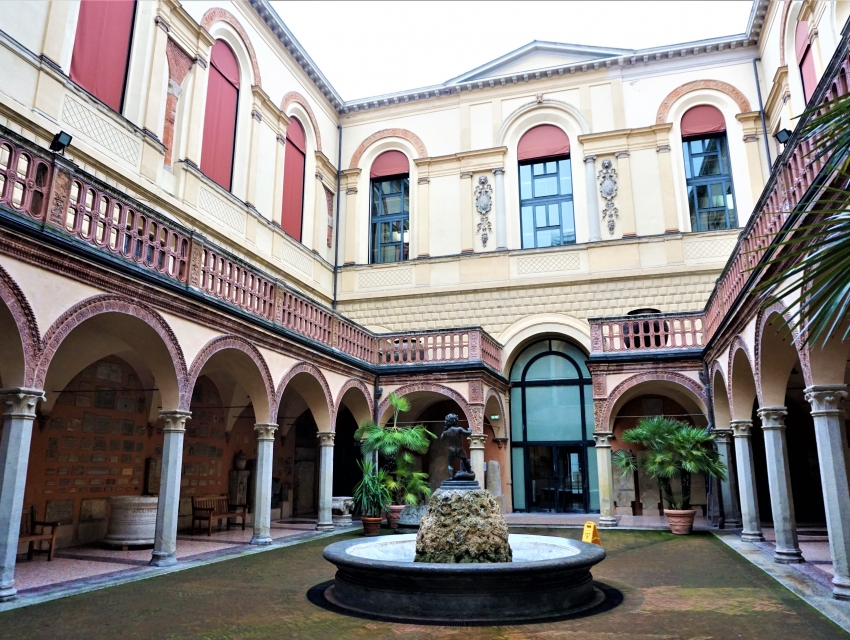
Civic Archaeological Museum
Set up in the fifteenth-century Palazzo Galvani, the museum has conserved the exhibition style of when it was inaugurated in 1881. It ranks among the most important Italian archaeological collections and is highly representative of local history, from prehistory to the Roman age. Its collection of Egyptian antiquities is one of the most important in Europe.
Medieval Civic Museum
This museum is a must for understanding the history of Bologna in the period of its maximum splendor. The building is an example of 15th century Bolognese architecture. Some rooms of the museum have frescoes by Carracci.
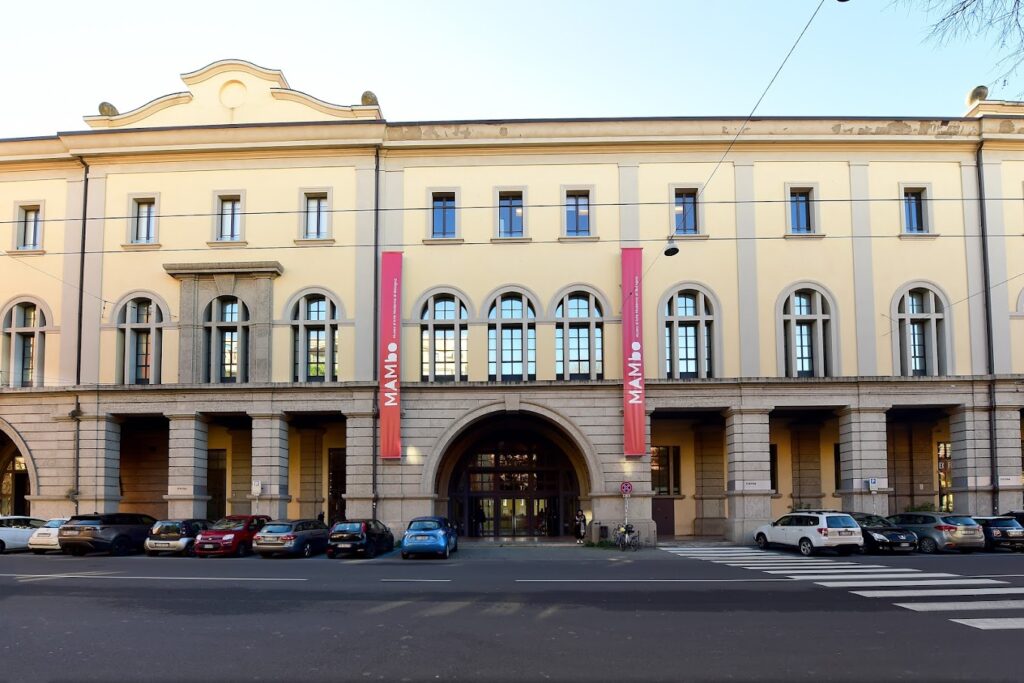
MAMbo
The Museum of Modern Art of Bologna, inaugurated in 2007, is home to the Institution of the Modern Art Galleries of Bologna, which also includes the Morandi Museum and House, the Museum for the Memory of Ustica, Villa delle Rose and the Sandra Natali Artists’ Residence. It houses a collection of over 3,500 works of sculpture and painting from the 19th century to today, with particular attention to post-war Italy.
Morandi Museum
Born from a donation by Maria Teresa Morandi, the museum dedicated to the painter Giorgio Morandi has been temporarily housed in the MAMbo since 2012, to allow for renovations to the main office, Palazzo D’Accursio. Inside you can admire the most important and complete collection of works by the Bolognese painter and engraver.
National Art Gallery
A few steps from the Two Towers, in the seventeenth-century former Jesuit convent of Sant’Ignazio, there is one of the most important art galleries in Italy, with works ranging from the thirteenth to the eighteenth century. Opened to the public in 1885, it was completely renovated in 1997. Among the masterpieces by Raphael, Tintoretto, Titian and Caracci on display in the gallery, there is also Giotto’s Bologna polyptych: the Virgin, imposing and majestic, is touched on the face by the Child.
The Jewish Museum
Built in the area of the former Jewish ghetto (directly at the foot of the Two Towers), the museum is multimedia and aims to tell the rich architectural, artistic, book and human history of the Jewish communities of Emilia-Romagna.
Museum of the Resistance
Set up in the complex of the former Convent of San Mattia, you can admire archival documents, artistic and photographic images, posters, multimedia products, all capable of bearing witness to the history of anti-fascism of the Bolognese Resistance, and its significance in the Republican Italy.
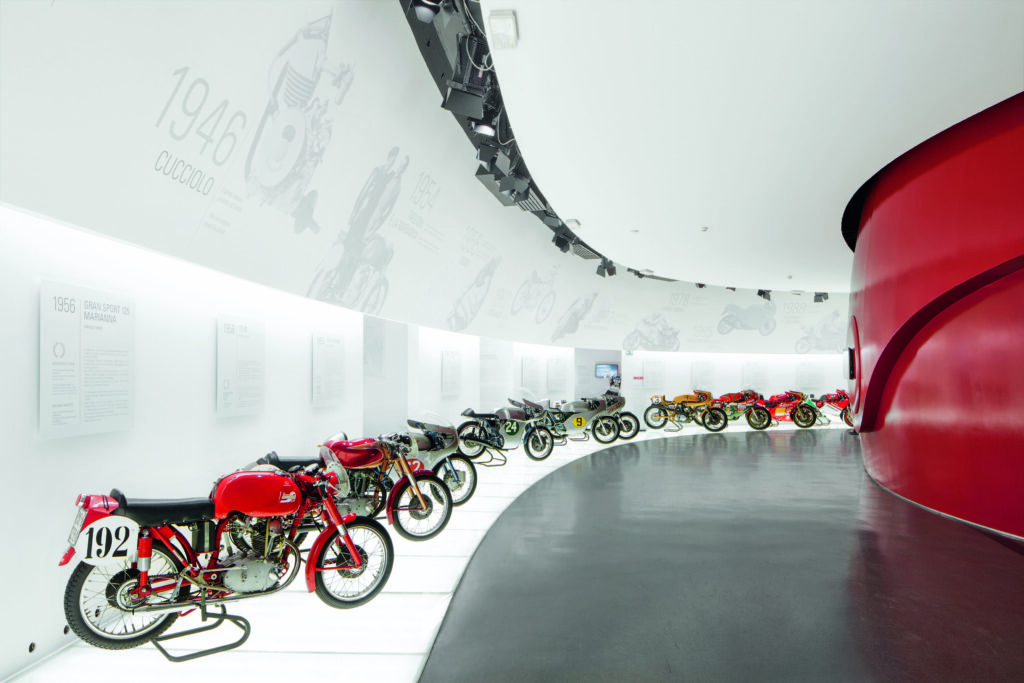
Ducati Museum
In the heart of the ‘motor valley,’ the museum dedicated to the company was born in 2016, retracing over 90 years of legendary history. The museum winds through three paths that cross the gallery of production of the famed Ducati motorcycles, the parade of Ducati racing motorcycles, and the Ducati Moments timeline.
This is just a glimpse of what the city has to offer. I will always have a soft spot for cities like Bologna, who often get overlooked by other more famous, and perhaps, more romantic cities in Italy. Bologna is not on everyone’s travel radar. At best, it’s a one-day stop for folks traveling from Florence to Venice. A vibrant, lively city, filled with students, activities, and yes, delicious food and wine, add Bologna to your travel list, and I promise, you will not be disappointed.
Leave a Reply

What to Pack for Italy
Cosa Mettere in Valigia per l'Italia
Everyone is always asking me what they should pack for Italy,
so I’ve created a quick reference guide that you can use for your next trip.
Hint: You don’t need nearly as much as you think you do!

One Comment
I love this newsletter! I enjoyed reading about Bologna. I hope to sign up for one of your cooking tours in the near future. Thank you for including me. I look forward to the next letter!